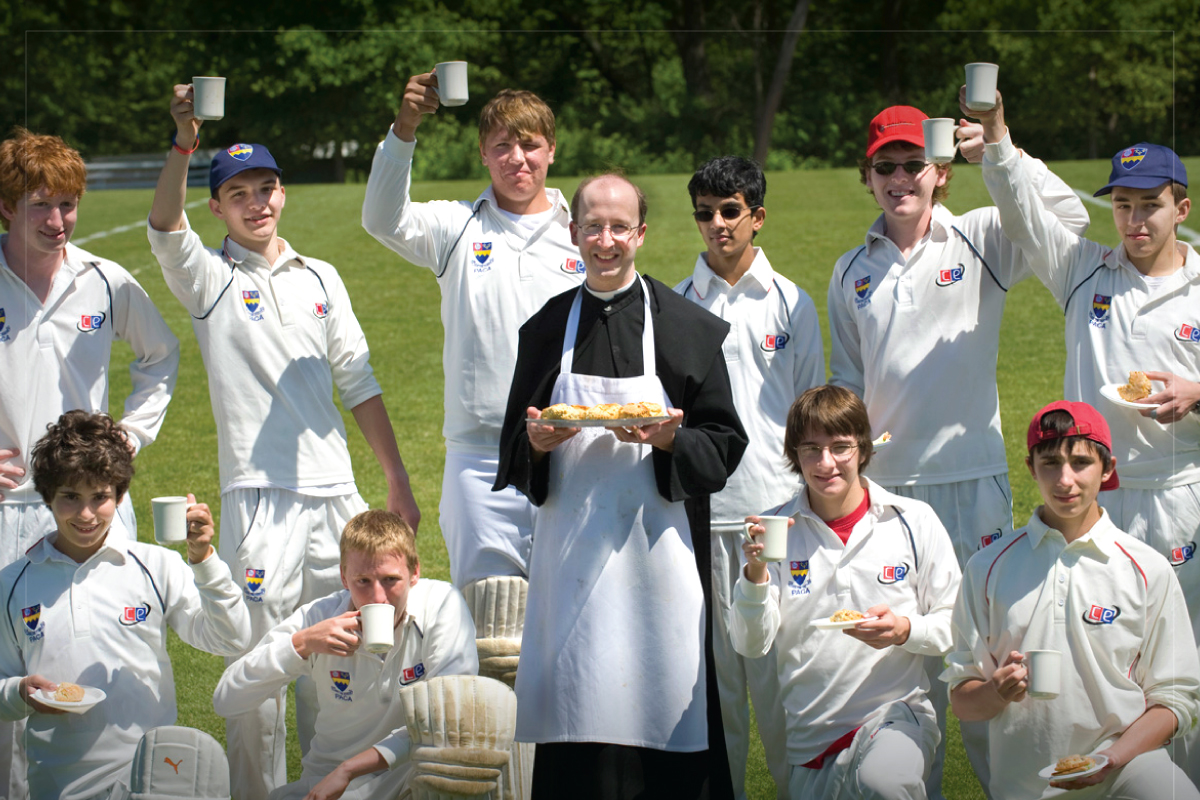“The wicket is turning and taking spin. The batsman cuts the leg break to square to end a maiden over. Time for the tea interval.”
Cricket is the only major sport built around meal times. The five-day international Test marches start mid-morning and stop for lunch with a short earlier drinks break. The game continues till tea, a longer interruption when the players leave the field for the pavilion. Then back to play, with maybe a drinks break if the weather is hot, until evening when they walk off – no, it’s not for cocktails.

This reflects the gentleman amateur history of what is now anything but gentle. At its best, it is a fascinating combination of raw power and chess-game subtlety. A seamed projectile arriving at the batsmans’s head, feet, nether regions and fingers, at speeds as low as 50 mph – or even one furling a fortnight – to bewilder the hitter as it spins with, against, across the seam or shiny side only. It may be a leg spin, off break, doosra, googly or chinaman.
Or a large gentleman with the friendly glare of a Viking berserker accelerates in from a few kilometers back and delivers a yorker, bouncer, reverse swing or occasional full toss, at over 90 mph from 20 meters. The laws permit one delivery aimed at the head every six balls, from under 60 feet away, two-thirds the distance a baseball pitcher throws from.
The batters cut, cover drive, tip, reverse sweep or merely clout the ball to evade the specialist fielders at slip, silly mid on, gully, square leg, third man, extra point, and deep mid wicket. A skilled player may bat for a day or even longer, accumulating runs to reach the mark of greatness: a century. One mistiming and he’s gone. Out means out.
The game is being shortened by new formats and the hottest version – which also has the largest attendance of any sport in the world, including soccer/football — is T20, where each side has a fixed number of 20 “overs” of six balls each. It makes baseball look slow (or even slower than foreigners find it.) The size of the crowds reflects India’s dominance in creating the competitive structures and leagues. It is the largest spectator sport in the world, with crowds bigger even than for football/soccer.
The links between cricket and tea are embodied in the tea break but go far deeper. The major international sides are England and its old colonies. The leaders are mostly also the ones best associated with tea growing. India has taken over much of the organization and, alas, corruption of a sport where illegal gambling is massive – billions of dollars – and match-fixing a recurrent problem. Cricket in Asia is huge and where the money is…
There’s a general consensus that two greatest players in cricket history are the Australian Don Bradman, who averaged 99 runs per inning in the 1930-50s with the second career highest in two hundred years being 61, and India’s Sachin Tendulkar who scored more runs than any other player, at an average of 53.
The Indian tea-cricket connection is obvious and without pushing the analogy too much, Tendulkar is Darjeeling legend and elegance. Bradman was dark, strong Builder’s Tea. Australia has always been a distinctive tea culture and invented the cricket tea break, not the English. Its players needed some rehydration in the hot weather.
Sri Lanka makes wonderful Ceylon teas of immense variety and quality. It seems appropriate that Kumar Sangakkara, the only rival to Tendulkar in runs and average, is also the rarest of all players: a legendary hitter and wicketkeeper (equivalent to a baseball catcher), and as varied in his style as Ceylon’s Nuwara Elya, Dimbula and Uva black and white teas.
Pakistan completes the analogies: one of the highest consumers of tea – and smugglers – and at its best an outstanding team. It has a curious link to tea. Because of the violence and dangers visiting teams faced, England and others have refused to play in Pakistan. Its team now operates entirely out of the United Arab Emirates and only 2 of its 22 team have ever played in Pakistan. Just like the English tea firm, Lipton’s that now makes most of its tea bags in Dubai – in the UAE.
As for England…
Why is cricket built on the tea not a coffee break? It’s light, with a little caffeine boost but not too much. Refreshing. Nonalcoholic, sugar-free… Packed with nutrient compounds, many of which seem to offer medical benefits… Gee, that sounds very healthy. Does it help cricketers lose weight? Tell you when we get back from the pub after we’ve had a quick curry.

